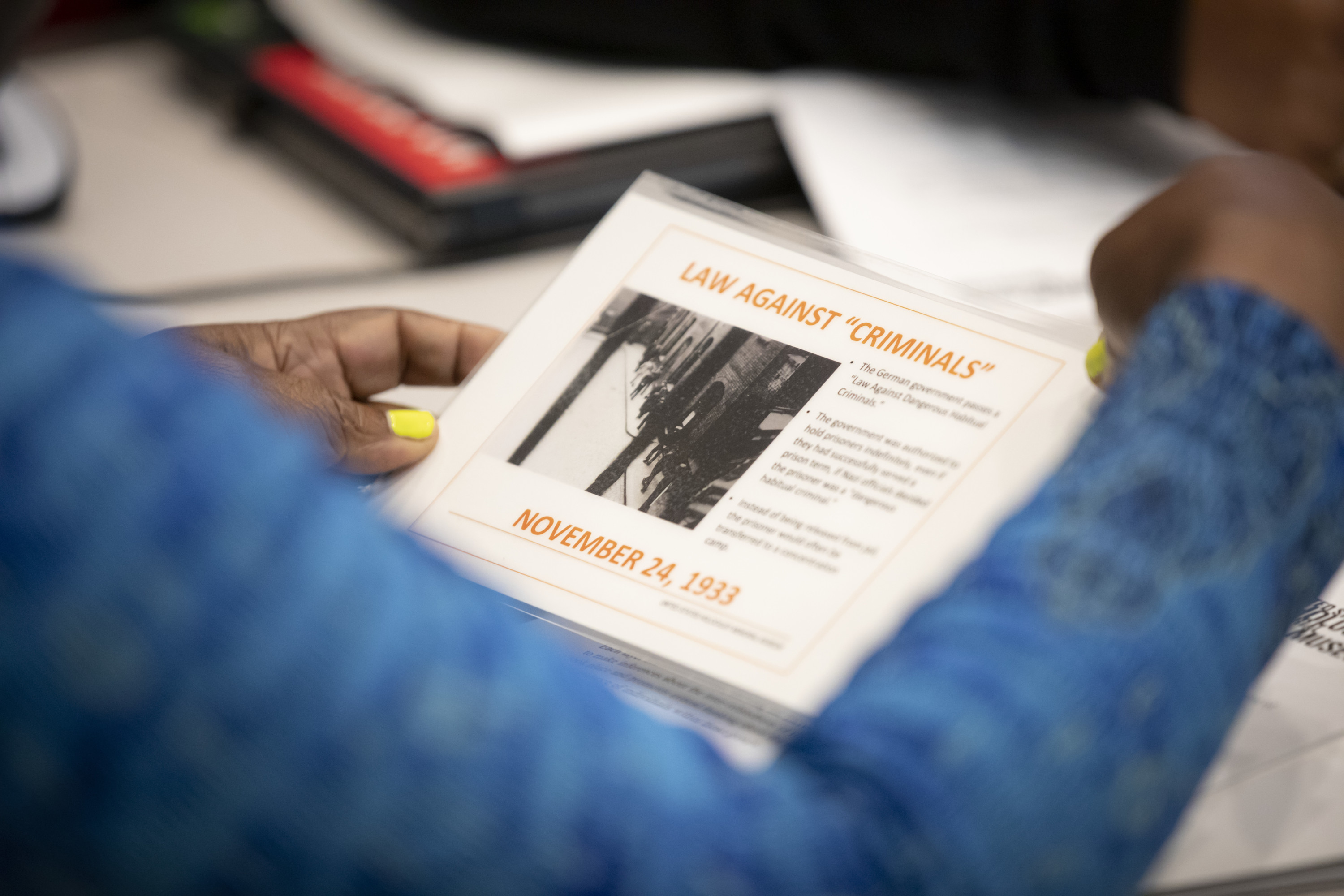US Holocaust Memorial Museum educators and historians created these lesson plans for use in secondary classrooms. Click on a lesson plan to see its recommended grade level, subjects covered, and time required to complete. To explore lessons organized by theme, visit Teaching Materials by Topic.
-
Lesson: Exploring Night as Literature, Bearing Witness to History
Elie Wiesel’s memoir, Night, has become a standard text used in many classes to both teach about the history and human impact of the Holocaust. This lesson will help teachers and students understand the fuller historical context of the events described in Wiesel’s writing.
-
Lesson: Exploring the Americans and the Holocaust Online Exhibition
By exploring the Americans and the Holocaust online exhibition, students will examine the motives, pressures, and fears that shaped American attitudes and responses to the threats of Nazism and the Holocaust during the 1930s and 1940s. Students will learn about actions taken at all levels of society—by the government, the media, other organizations, and individual citizens—and how opportunities for action changed over time. This lesson promotes reflection and critical thinking about various factors that shaped attitudes and actions during that time and the factors that influence us today.
-
Lesson: Exploring Nazi Propaganda
This lesson explores the online exhibition State of Deception. Students will dialogue and reflect on the ways in which propaganda affected society during the Holocaust and how it continues to affect people today.
-
Lesson: First Person, Conversations with a Holocaust Survivor
Join Holocaust survivors for live First Person conversations as they share their experiences in their own words. This guide provides scaffolding to integrate the First Person conversations into your classroom. By viewing First Person testimony, students are exposed to the diversity of experiences of Holocaust survivors.
-
Lesson: Guide to The World Must Know
The book The World Must Know provides a narrative of the Holocaust “as told in the United States Holocaust Memorial Museum.” Its structure mirrors that of the Museum’s Permanent Exhibition: The Holocaust.
-
Lesson: Hoecker/Auschwitz Albums Photo Analysis
Students will examine photographs taken in and around the Auschwitz-Birkenau concentration camp and killing center in 1944 and engage in photo analysis techniques to deconstruct the photographs.
-
Lesson: Holocaust Narrative through Historical Photos
This lesson provides a method of assessing what students know and how they think about the Holocaust. Through interacting with a range of historical photographs and images, students generate questions that can then lead to more productive lesson planning.
-
Lesson: Immigration and Refugees, A Case Study on the Wagner-Rogers Bill
By examining the Wagner-Rogers Bill of 1939, students learn how Americans debated the country’s role as a haven for refugees, identifying economic, social, and geopolitical factors that influenced Americans’ attitudes about the United States’ role in the world during the critical years 1938–1941. Using primary-source documents, students identify and evaluate arguments that Americans made for and against the acceptance of child refugees in 1939. The lesson concludes with reflection on questions that this history raises about America’s role in the world today.
-
Lesson: Interpreting News of World Events 1933–1938
By examining news coverage around three key events related to the early warning signs of the Holocaust, students will learn that information about the Nazi persecution of European Jews was available to the public. They will also consider the question of what other issues or events were competing for Americans’ attention and concern at the same time. Despite the many issues that were on their minds during the period 1933–1938, some Americans took actions to help persecuted Jews abroad, with varying degrees of effectiveness.
-
Lesson: Isolation or Intervention? A Case Study on the Lend-Lease Act
In this lesson, students will identify multiple economic, social, and geopolitical factors that influenced Americans’ attitudes about the United States’ role in the world from 1939–1941, when people in the United States were deeply divided about what actions, if any, America should take in defense of countries threatened by German military conquest. Through an examination of primary source documents, students will identify and evaluate arguments that different Americans made for the provision of military materiel to Britain in 1940. Ultimately, students will reflect on questions that this lesson raises about America’s role in the world today.

